Frustrations... lack of progress... environmental groups are maddened but EPA is pleased...12/9/2018  The Cedar Rapids Gazette has dedicated resources to reporting on the progress of the twelve states that have agreed to work toward a 45% reduction in the amount of nitrogen and phosphorus discharged to the Mississippi, with a goal of reducing the 'dead zone' in the gulf. This is an excellent series of articles, and is highly recommended to be read in their entirety. The Gazette keeps their content behind a pay wall, however, allowing only so many 'reads' for free, and then requiring subscription at the introductory rate of $.99 for the first month. Here's a link to the articles - well worth checking into. All that said, now here on the blog we will attempt to provide a summary - or maybe a teaser - with quotes and illustrations from the Cedar Rapids Gazette. The main article looks at what's being done and where, and how little progress is being made despite lots of sound and fury and expense. We also add here some information on what is happening in Minnesota, the headwaters state, where implementation is incremental at best, and positive results seen only on a small scale while the larger problem grows. The article starts off with a problem statement: "A government task force said in 2008 it would cut nitrate and phosphorus pollution 45 percent by 2015 — both to help the Gulf of Mexico, where the nutrients have created a sprawling dead zone in which wildlife cannot survive — and to protect the health and safety of Midwest waters. Now 10 years later, the dead zone is growing, the 45 percent goal has been shoved back 20 years and, although millions have been spent in nearly every state along the Mississippi River, it’s not clear any progress is being made, a four-month investigation by The Gazette found." There has been no reduction in nutrients, and the 'dead zone' continues to grow. Illustrations from the Cedar Rapids Gazette articles. “The Gulf’s oxygen-deprived dead zone, called that because fish and other organisms must swim away or die, has an average size over the past five summers of 5,772 square miles. That’s three times larger than the task force’s goal of about 1,900 square miles. The group established the 45-percent reduction in nitrate and phosphorus running into the Mississippi because that’s what scientists think is needed to shrink the dead zone. The task force’s 2008 Action Plan, a 64-page document that doesn’t describe enforcement options, asked each of the 12 central U.S. states to develop their own plans for reducing nutrients. The states are Minnesota, Wisconsin, Iowa, Illinois, Missouri, Indiana, Ohio, Kentucky, Tennessee, Mississippi, Arkansas and Louisiana. The Gazette reviewed all 12 state strategies, talked with dozens of state agency leaders and found the following:
In this article, Erin Jordan (author) contrasts the lack of progress in the Mississippi Basin with the work that is being done in the Chesapeake Bay, where reductions were mandatory and the water is getting cleaner. Click "Read More" below for more on Chesapeake Bay and information about voluntary and regulatory efforts to reduce nitrogen releases in Minnesota. 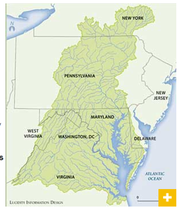 Chesapeake Bay was getting eutrophic, plagued with algae blooms and severe degradation of ecosystems that were highly valued by residents and visitors to the area. (Think of Maryland crab cakes ...) Here, US EPA required the six states to take action, eventually entering into agreements with each state that required setting of numeric limits for pollution and setting timelines for actions to be taken. As you can see in the graphic below, some states continue to lag behind, and climate change threatens to undo some of the accomplishments that have been gained. Would a more rigorous approach like this be more effective in the Mississippi Basin, rather than our current voluntary approach? (Click here for more info on Chesapeake Bay; also, the Environmental Integrity Project issued a report on potential impacts on Chesapeake Bay - read that here.) In Minnesota, the Minnesota Department of Agriculture is charged with both promotion and regulation of the agriculture sector. Their regulatory authorities include addressing excessive nutrient discharges to Minnesota's surface and ground waters. They are moving ahead in several ways. One approach is regulatory, through the promulgation of a rule to reduce nitrate pollution in sensitive ground water areas and drinking water protection areas. We provided information on this in a previous blog post, read more here. MDA's website (here) shows that their goal is to complete this rulemaking yet this year - meaning they have three weeks left.
The MDA is also pursuing voluntary measures through a program called the Minnesota Agricultural Water Quality Certification Program. In this program, farmers volunteer to improve the environmental performance of their farms in exchange for 'regulatory certainty' - essentially an agreement that any new environmental standards will not be required of these farmers for ten years. (Read more about this program here.) The MDA reports the following successes: "Since the build-out of the program in 2014, the Ag Water Quality Certification Program has:
The success of these programs and other efforts to reduce nitrogen discharges has yet to be seen. For now, the Cedar Rapids Gazette article provides this graphic. Looks like we've got a way to go...
0 Comments
Your comment will be posted after it is approved.
Leave a Reply. |
| LWV Upper Mississippi River Region | UMRR blog |
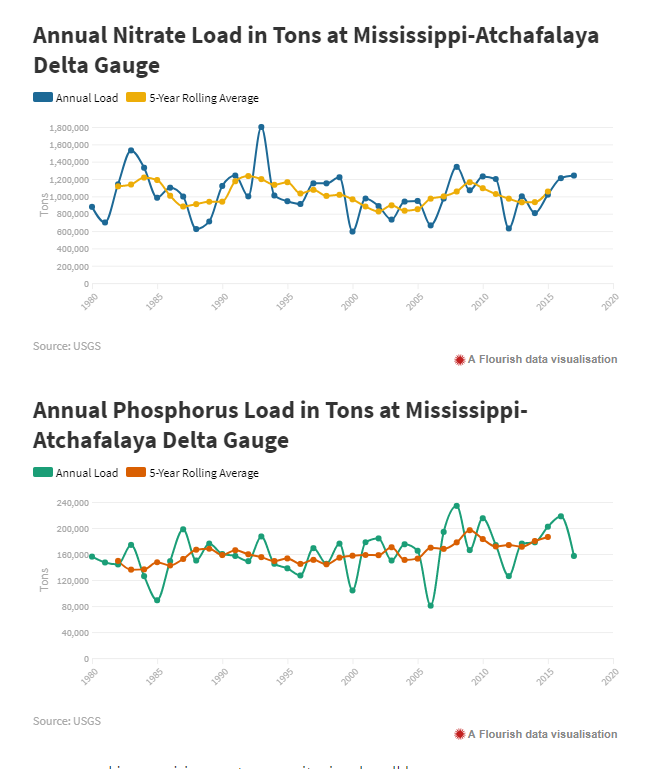
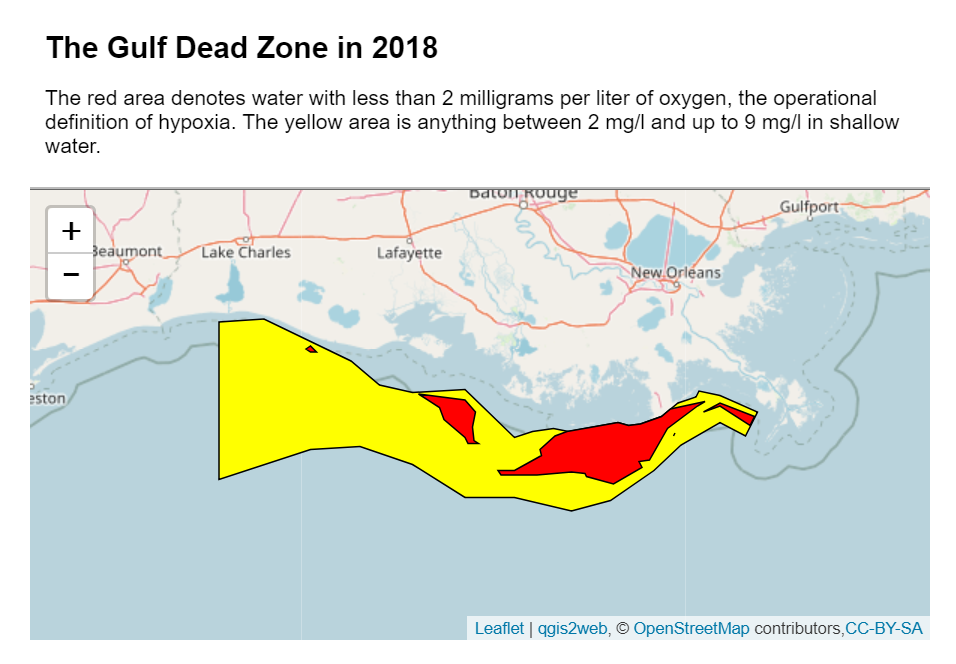
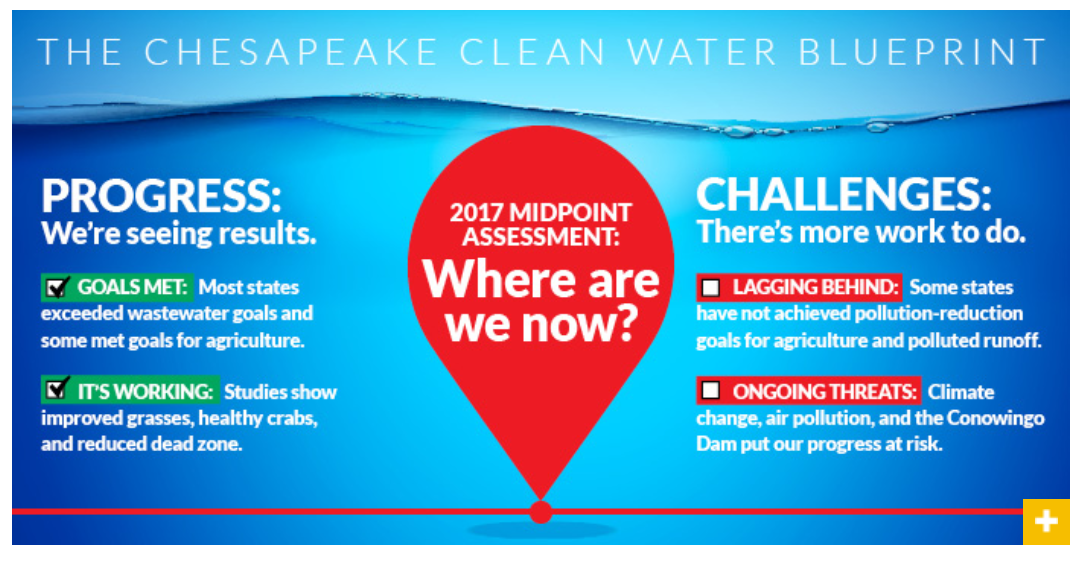
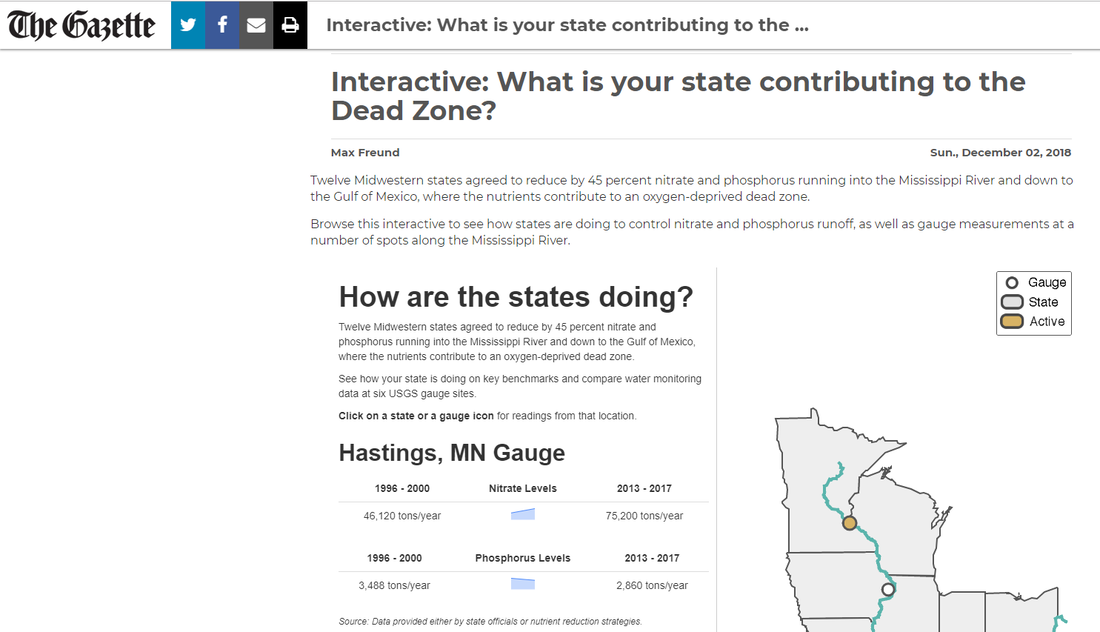
 RSS Feed
RSS Feed